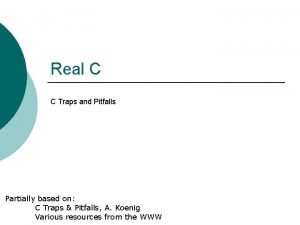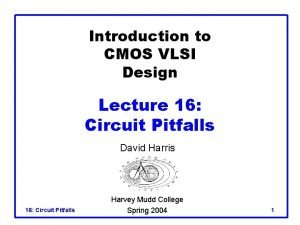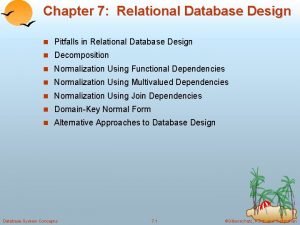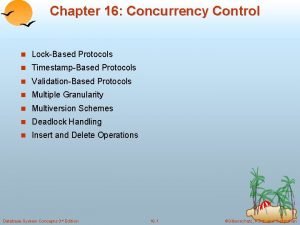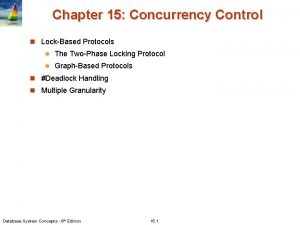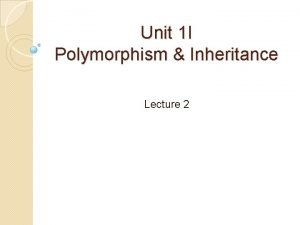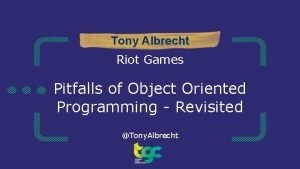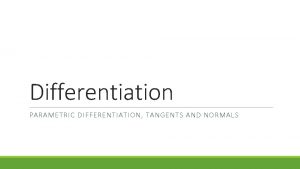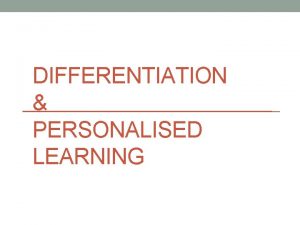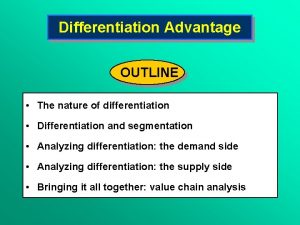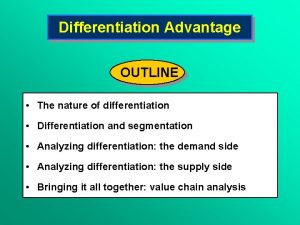Differentiation Strategies and Pitfalls Avoid the differentiation pitfalls











- Slides: 11

Differentiation Strategies and Pitfalls

Avoid the differentiation pitfalls Consider • What differentiation is appropriate for the mastery of THIS concept/ skill? • What are this student’s CURRENT needs based on their recent work? • ‘All, most, some’ is a blunt tool • Struggle in learning is good: differentiation should not remove this • Extension Tasks are not differentiation Andy Tharby writes intelligently about ‘The Dangers of Differentiation and what to do about them’ @Reflecting English

1. Differentiation through planning Use students’ work: Differentiate based on where students were on their last piece of work • Use your seating plan. Group students into Mastery Groups based on their mastery of the concept/ skill so that they can access appropriate tasks, teacher support and resources together • Create a ‘ladder’ of tasks for students to work through. Students practice tasks for as long as it takes to master that level: a. Practice for Understanding Tasks b. Practice for Mastery Tasks c. Practice for Connecting Tasks • Differentiate timings: give students with mastery both more time on some tasks to do more deeply, & less time on other tasks to do more quickly • Build in opportunities for students to take learning to the next level e. g. A Level or undergraduate study •

2. Differentiation through explanation • Differentiate through explanation strategies: Connect, concretise, analogise, model, walk it through, visualise, limbo dance • Differentiate through level of modelling • Differentiate from concrete to abstract • Differentiate through different levels of example sequences of: a. A range of positive examples of a concept b. The limits of the concept by negative examples c. Minimally different examples • Differentiate through student explanation: a. Elaborative interrogation b. Self-explanation c. Peer-explanation

3. Differentiation by task • a. b. c. d. e. f. • a. b. c. d. • • • Set a ‘ladder’ of tasks to mastery for students to access at the appropriate level: Through Blooms Through SOLO From shallow to deep at a level of Blooms or SOLO From developing to extending From scaffolded to independent From oral to written At the top end: Set tasks that encourage extended abstract thinking e. g. Spreading activation models to show links between factors Set ‘richer’ tasks encouraging depth and detail or study of methodology Encourage students to go above and around the topic Provide opportunities for students to take learning to the next level e. g. A Level or undergraduate study Use menus of tasks to practice learning in different contexts Allow students to record learning in different ways Use graphic organisers to help some students to organise their ideas Differentiation Up Less More Scaffolding Open-ended Direction Choice Repetition Development Basic Depth & detail Of the same Variety Narrowness Breadth Lower order Higher order Simple Complex Recap Evaluation Concrete Abstract

4. Differentiation by writing activity Differentiated models Differentiated check lists Differentiated word mats (created by students) • Differentiated writing frames/ scaffolds • Differentiated sentence stems • At the top end encourage brevity: students express the point in exactly 50 words or summarise for Twitter: 140 characters max • Differentiation by writing genre or number of genres used • Differentiation by writing style: at the top end students use nominative style For more ideas on scaffolds see @Must Do Better and @Improving Teaching • • •

5: Differentiation in questioning • • Questioning linked to level of mastery Move from closed to open Move from shallow to deep Increase level of probing Move into Socratic questioning Move into students’ questioning Differentiate ‘waiting time: ’ 10 seconds or longer for ‘richer’ responses Expect all students to always answer in sentences but at the top end expect students to answer in paragraphs to encourage deepened responses For more ideas see @huntingenglish

6. Differentiation through resourcing • • • Know the reading age of students; provide appropriate texts for access and extension Colour code resources by difficulty so students can select the appropriate resource Expect students to gather information from a range of resources rather than one key text book Teach higher order reading skills: skimming and scanning Provide subject reading lists to encourage students to read above and around the topic Provide resources for students to take learning to the next level e. g. A Level or undergraduate study

7. Differentiation by Support • • Differentiate through conversation with students Use students with the next level of mastery as coaches for other students Use students as peer buddies strengthening each other in different skills e. g. reading/ writing, analysis/ detail, vocabulary/ structure Use students as peer partners e. g. writer/ presenter, divergent/ convergent thinker partners Plan lessons so you can act as a coach to a group of students as part of a peer coaching lesson Differentiate the support given to students Allow students to ‘buy’ extra support Divergent Thinker Convergent Thinker Quantity of ideas Analyses & integrates ideas Excited & energetic Draws conclusions Likes challenge Compares, contrasts Encourages ideas More deliberate thinker

8. Differentiation by Language • • • Insist on precision language in all students’ written and oral feedback – ‘now say it again properly’ Differentiated work sheets Differentiated resources Differentiated writing frames Differentiated vocabulary lists Differentiated key words Differentiated word mats Differentiated connectives Differentiated sentence stems Differentiated levels of antonyms and synonyms Differentiated number of new words Instead of Listen for I had a go I analysed I reckon I predict Maybe I conclude I think The main reason Is it… 4? My calculation shows the answer is 4 According to Similarly To conclude Arguably Evidently Therefore This suggests This links to Overall

9. Differentiation by feedback • • Differentiate verbal feedback Differentiate improvement strategies Differentiate improvement tasks Differentiate feed forward activities
 Pitfalls of differentiation strategy
Pitfalls of differentiation strategy The pitfalls of a differentiation strategy include
The pitfalls of a differentiation strategy include C traps and pitfalls
C traps and pitfalls Nitcar
Nitcar Latchup in vlsi
Latchup in vlsi What is control m
What is control m Common pitfalls adalah
Common pitfalls adalah Pitfalls in relational database design tutorialspoint
Pitfalls in relational database design tutorialspoint Graph based locking protocol
Graph based locking protocol What are two pitfalls (problems) of lock-based protocols
What are two pitfalls (problems) of lock-based protocols Pitfalls of operator overloading in c++
Pitfalls of operator overloading in c++ Pitfalls of object oriented programming
Pitfalls of object oriented programming


